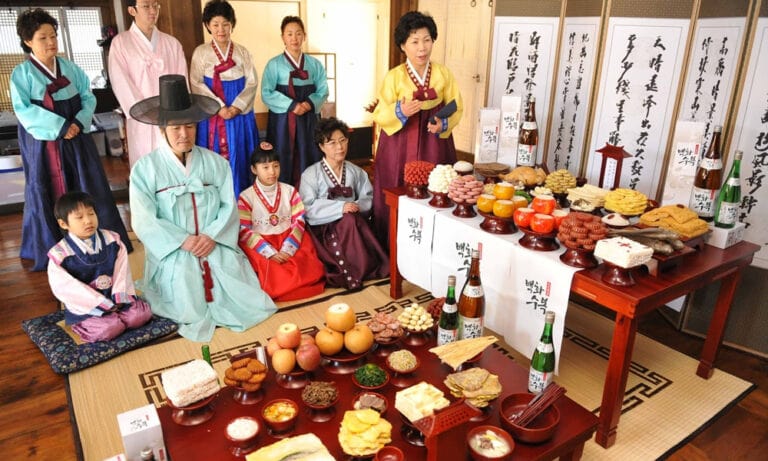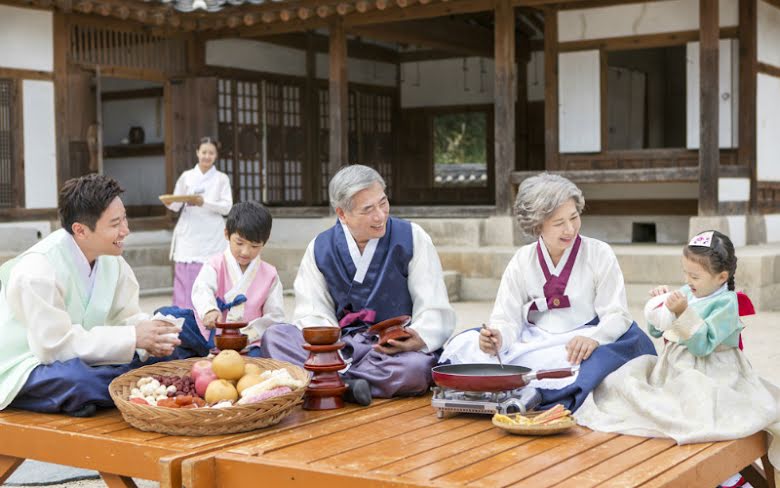The Korean Chuseok Festival is a major traditional holiday that celebrates the autumn harvest and honors the ancestors. It is also known as Hangawi or the Korean Thanksgiving. It is usually celebrated in September or October, depending on the lunar calendar. It is a three-day holiday in South Korea and a one-day holiday in North Korea. Here is a brief introduction to the history, customs and food of the Chuseok Festival.
History of Korean Chuseok Festival
The origin of Chuseok can be traced back to the ancient times, when people held rituals to thank the gods for the bountiful crops. According to one legend, Chuseok was first celebrated during the reign of the third king of Silla, who held a month-long weaving contest between two teams of women. The winning team was treated with a feast by the king on the 15th day of the 8th lunar month, which became the date of Chuseok.

Celebrate Chuseok with 10 Popular Yummy Chuseok Food
Another legend says that Chuseok was derived from gabae, a tax system in which people paid tribute to the king with grains and cloth. The tribute was collected on the 15th day of the 8th lunar month, which was also the day when people enjoyed the fruits of their labor.
Chuseok became more popular during the Joseon Dynasty (1392-1910), when Confucianism emphasized filial piety and ancestor worship. Chuseok became a time to pay respect to one’s ancestors and relatives, as well as to share food and joy with one’s family and neighbors.
Customs of Chuseok Festival
One of the most important customs of Chuseok is charye, which is an ancestral memorial service held at home. The family members prepare a table with various food offerings, such as fruits, rice cakes, meat dishes, and wine. They also set up portraits or tablets of their ancestors and bow to them in a formal ceremony. They express their gratitude for their ancestors’ protection and blessings and pray for their peace and happiness.
Another custom is seongmyo, which is a family visit to the ancestral graves. The family members clean the graves, remove weeds, and offer food and drinks to their ancestors. They also perform beolcho, which is cutting the grass around the graves. This is a way of showing respect and care for their ancestors’ spirits.

People usually wear the traditional Korean attire hanbok
Chuseok is also a time to enjoy various games and entertainment with one’s family and friends. Some of the traditional games include ganggangsullae, which is a circle dance performed by women under the full moon; ssireum, which is a Korean wrestling match; and bull fighting, which is a contest between two bulls. These games are meant to promote harmony and friendship among the participants.
Food in Chuseok Festival
Food is an essential part of Chuseok, as it symbolizes abundance and gratitude. The most representative food of Chuseok is songpyeon, which are half-moon shaped rice cakes filled with sweet or savory ingredients, such as sesame seeds, chestnuts, beans, or honey. Songpyeon are steamed over pine needles, which give them a fragrant aroma. They are also shaped by hand, which reflects one’s wishes and prayers for one’s family.
Other popular food items include japchae, which are stir-fried glass noodles with vegetables and meat; jeon, which are pan-fried pancakes with various ingredients, such as seafood, meat, or vegetables; galbijjim, which are braised beef ribs with soy sauce and sugar; and yakgwa, which are deep-fried honey cookies. These food items are usually prepared in large quantities and shared among family members and neighbors.
>>> Read more: Unique greeting card – Best choice for your beloved one!

 Tiếng Việt
Tiếng Việt
